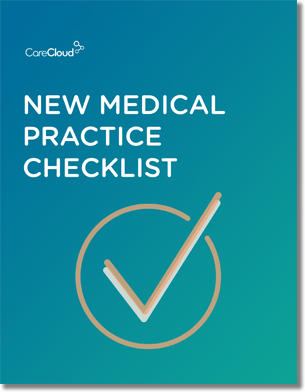The age of electronic health records is upon us. Health IT innovation is soaring, the ONC declared 2012 as the “Year of Meaningful Use” and close to 60% of American physicians have already adopted EHRs.
And while most of us believe EHRs will continue playing a vital role in patient care and prevention of diseases, unexpected administrative and procedural issues are bound to spring up as doctors rearrange workflows.
One of the most contentious issues around EHR usage is the damage it may do to patient communication. Like with many technologies, critics believe EHRs cause doctors to be less social. Is there a way to use your EHR and still effectively communicate with your patient?
What System Are You Using?
The most important aspect to consider is the EHR you’re using. For instance, if you’re operating from an EHR written in MUMPS or relying on a clunky client-server system, you’ve already spotted your first mistake.
Your practice moves quickly. You need a lightweight, cloud-based electronic health record, so your updates and maintenance are done remotely and renewing doesn’t consist of a huge medical equipment overhaul. Furthermore, user experience is king – ensure you choose an EHR that’s easy to interpret and read, and emphasizes less clicks.
Tech Devices Are Distracting
Physicians may note that having a computer in the room can pull them away from focusing on a patient, and may even be tempted by too much hunting for information, pending instant messages, or other EHR alerts.
Try positioning your monitor in a way that will help you maximize eye contact with your patient, even if this means moving some furniture around. Some practices are trying triangle formations that place the physician, patient, and computing monitor at each of the three corners, allowing the doctor to give both the EHR and the patient fair treatment.
Try engaging the patient in whatever parts of the EHR screen you’re discussing with him or her, and establish a policy with your practice staff to deter leisure browsing and excess IMs.
Too Much Data?
Last we checked, patients feel more relieved knowing information from other doctors is available, and greater access to data is typically considered a pro in most scenarios.
However, too much access to information can convince some physicians and staff that they have all the information they need, which results in less questions for the patient and decreased communication. To avoid this, ensure you’re validating and accumulating EHR information with both the patient and other clinicians in your practice.
The LEVEL System
Integrated managed care consortium Kaiser Permanente designed the LEVEL system, a mnemonic device to help physicians more efficiently use an EHR in the examination room.
L: Let the patient look on. Reiterate parts of the EHR that are relevant to the patient’s condition, and let him or her look on when answering questions.
E: Eye contact. Treat your patient like you would a close friend or family member. Eye contact instills trust in the patient-doctor relationship.
V: Value the computer. Reiterate some of your EHR’s processes and capabilities, i.e., answering the patient’s question using the electronic health record, or tell them when you’ve sent their prescription to the pharmacy. And don’t be afraid to share visuals.
E: Explain what you’re doing. Be as transparent as you would be above about your processes away from the computer. And since you’re in front of a monitor during the patient visit, this will reassure the patient that you’re not tweaking your Facebook Timeline instead.
L: Log off. Do your patients a favor and quell their fears – log off when they’re still in the examination room.
Easy access to boatloads of information is a good thing, provided you can manage it. Just think about how much you can enrich patient education during consultations, which makes both you and your patients’ lives easier. Make sure you don’t forget there’s a human sitting beyond your computer monitor.
What do you do to better communicate with your patients?

Do you know what you need when setting up a new medical practice?



